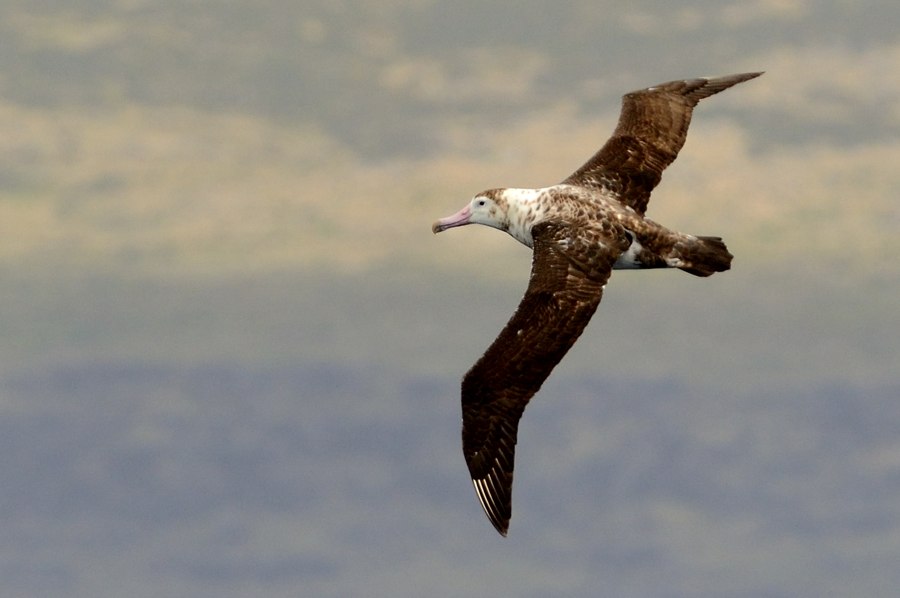 An Amsterdam Albatross in flight; photograph by Kirk Zufelt
An Amsterdam Albatross in flight; photograph by Kirk Zufelt
A new paper by Karine Delord (Centre d’Etudes Biologiques de Chizé, France) and colleagues has been published in PCI Ecology. The study investigates developmental shifts in the foraging behaviour of the Amsterdam Albatross through the use of remote tracking on naïve juveniles, immatures and adults.
The paper’s abstract follows:
“The transition to independent foraging represents an important developmental stage in the life cycle of most vertebrate animals. Juveniles differ from adults in various life history traits and tend to survive less well than adults in most long-lived animals. Several hypotheses have been proposed to explain higher mortality including that of inadequate/inferior foraging skills compared to adults, young naïve individuals combining lack of experience and physical immaturity. Thus a change in behaviour, resulting in an improvement of skills acquired from growing experience, is expected to occur during a period of learning through the immaturity phase. Very few studies have investigated the ontogeny of foraging behaviour over long periods of time, particularly in long-lived pelagic seabirds, due to the difficulty of obtaining individual tracking data over several years. We investigated the foraging behaviour, through activity patterns, during the three life stages of the endangered Amsterdam albatross by using miniaturized activity loggers on naïve juveniles, immatures and adults. Naïve juveniles during their first month at sea after leaving their colony exhibited lower foraging effort (greater proportion of time spent sitting on water, longer and more numerous bouts on water, shorter and fewer flying bouts). Patterns of activity parameters in juveniles after independence suggested a progressive change of foraging performances during the first two months after fledging. We found sex differences in activity parameters according to time since departure from the colony and month of the year, consistent with the important sexual dimorphism in the Amsterdam albatross. Regardless of life stage considered, activity parameters exhibited temporal variability reflecting the modulation of foraging behaviour. This variability is discussed in light of both extrinsic (i.e. environmental conditions such as variability in food resources or in wind) and intrinsic (i.e. energetic demands linked to plumage renew during moult) factors.”
Reference:
Delord, K., Weimerskirch, H. & Barbraud, C. (2023). The challenges of independence: ontogeny of at-sea behaviour in a long-lived seabird. PCI Ecology. https://doi.org/10.1101/2021.10.23.465439
27 November 2023

 Français
Français  English
English  Español
Español